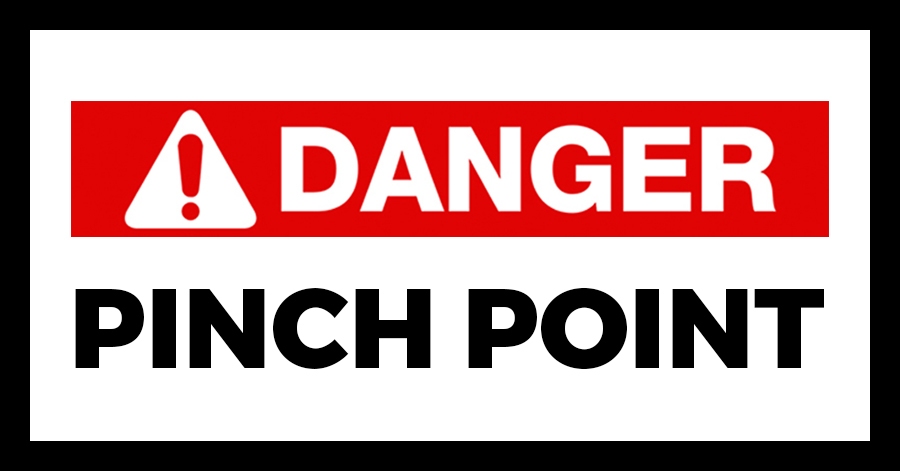
July 31, 2020
Each year approximately 125,000 people suffer pinch point injuries while on the job. And while some walk away with nothing more than small bruises, blisters or cuts, others aren’t so lucky. In fact, a serious pinch point injury could wind up in an amputation, hospitalization or worse.
That’s a far cry from the minor pinches that most of us experienced as kids. And it’s a perfect reason to devote some extra attention to pinch point safety topics this August.
Along those lines, here are five helpful hints from OSHA and other pinch point safety sources (along with a handy acronym for remembering them.)
Provide a quick refresher course to remind employees about what pinch points are. Although most of your warehouse employees probably know the basics, some may not realize how many potentially “pinchy” hazards there are in the average warehouse. Remind them that while heavy machinery and equipment often pose some of the biggest pinch point safety risks, things like heavy boxes, pallets, hand tools (such as pliers), drum lids, dock doors and even ordinary doors are also capable of causing harm – particularly if people aren’t paying attention.
Invest in PPE, and insist that employees wear it. While proper gloves and footwear alone probably aren’t enough to protect people from every pinch point injury, they can serve as an important line of defense if a pinch occurs. In some cases, they could be the difference between a visit to your facility’s First Aid professional and a trip to the hospital.
Never accept anything less than employees doing their jobs the right way, every time. Each time workers take a shortcut or try to bypass the proper process for performing a task, they increase the possibility that they’ll do something wrong and injure themselves, especially when they’re working around machinery or heavy objects. In fact, unauthorized workarounds are one of the most common causes of pinch point injuries.
Caution employees about why they should never forget to lockout or tagout equipment before they start to repair, adjust, unjam or maintain it. Even machines that have been carefully switched off can occasionally turn on when someone’s working on them, and if someone’s hands or body parts are near pinch points when that occurs, the resulting injury won’t be pretty.
Highlight the importance of machine/tool guards. Remind your personnel never to disable or remove a guard (which is often required by OSHA) that’s in place – and instruct them to avoid reaching over, under or through one. Just as important, warn them not to use any machine or tool that is supposed to have a working guard but doesn’t.
Needless to say, these aren’t the only pinch point safety ideas we have or the only safety topic you should be addressing as the dog days of summer reach their peak. (These include making sure your employees are staying properly hydrated and of course, ensuring that you and your employees are following all CDC guidelines for wearing masks, washing hands and social distancing as we continue to deal with COVID-19 in our warehouse operations.)
To find out more, download this month’s warehouse safety training calendar. Or head on over to some of our other safety blogs, such as “Preventing Dehydration & Improving Safety In Warehouse Operations” and “The Impact of COVID-19 on Warehouse Safety & How to Mitigate Risks.”
Thanks for reading. More important, thank for caring enough to keep your employees safe. Please download and use the August 2020 warehouse safety calendar to greatly reduce injuries and encourage safe practices each and every day in your operations!
%20August%20Preshift%20Calendar.png?width=1043&name=2020%20(8)%20August%20Preshift%20Calendar.png)
Tags:

To follow along with our most recent safety calendar for March, interactions this week should focus on attention to running lines by your workers. If an employee operates powered equipment, then they...
Resources
Connect